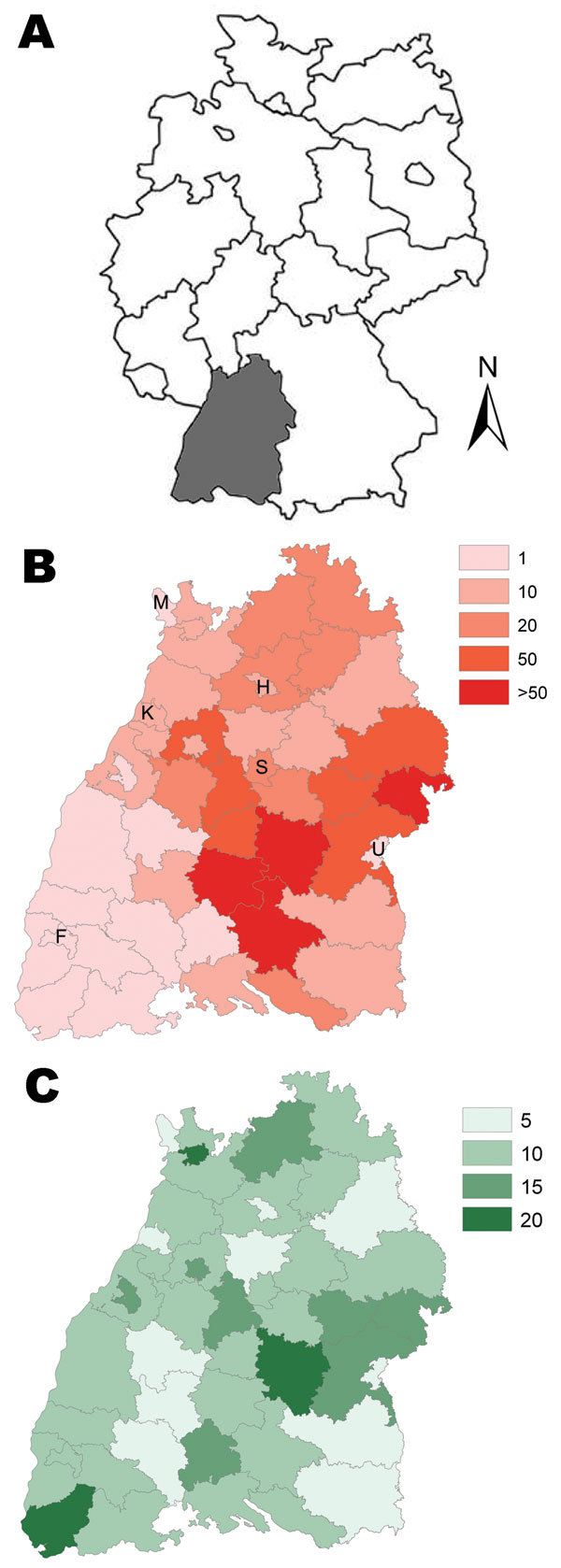Volume 15, Number 7—July 2009
Research
Risk Factors for Human Infection with Puumala Virus, Southwestern Germany
Figure 1

Figure 1. A) Map of Germany showing location of Baden-Württemberg region (gray shading). B) Cumulative incidence (per 100,000 population) of nephropathia epidemica, Baden-Württemberg, Germany, 2001–2007. Letters indicate major cities: F, Freiburg; H, Heilbronn; K, Karlsruhe; M, Mannheim; S, Stuttgart; U, Ulm. C) Percentage cover of beech forest.
Page created: November 08, 2010
Page updated: November 08, 2010
Page reviewed: November 08, 2010
The conclusions, findings, and opinions expressed by authors contributing to this journal do not necessarily reflect the official position of the U.S. Department of Health and Human Services, the Public Health Service, the Centers for Disease Control and Prevention, or the authors' affiliated institutions. Use of trade names is for identification only and does not imply endorsement by any of the groups named above.